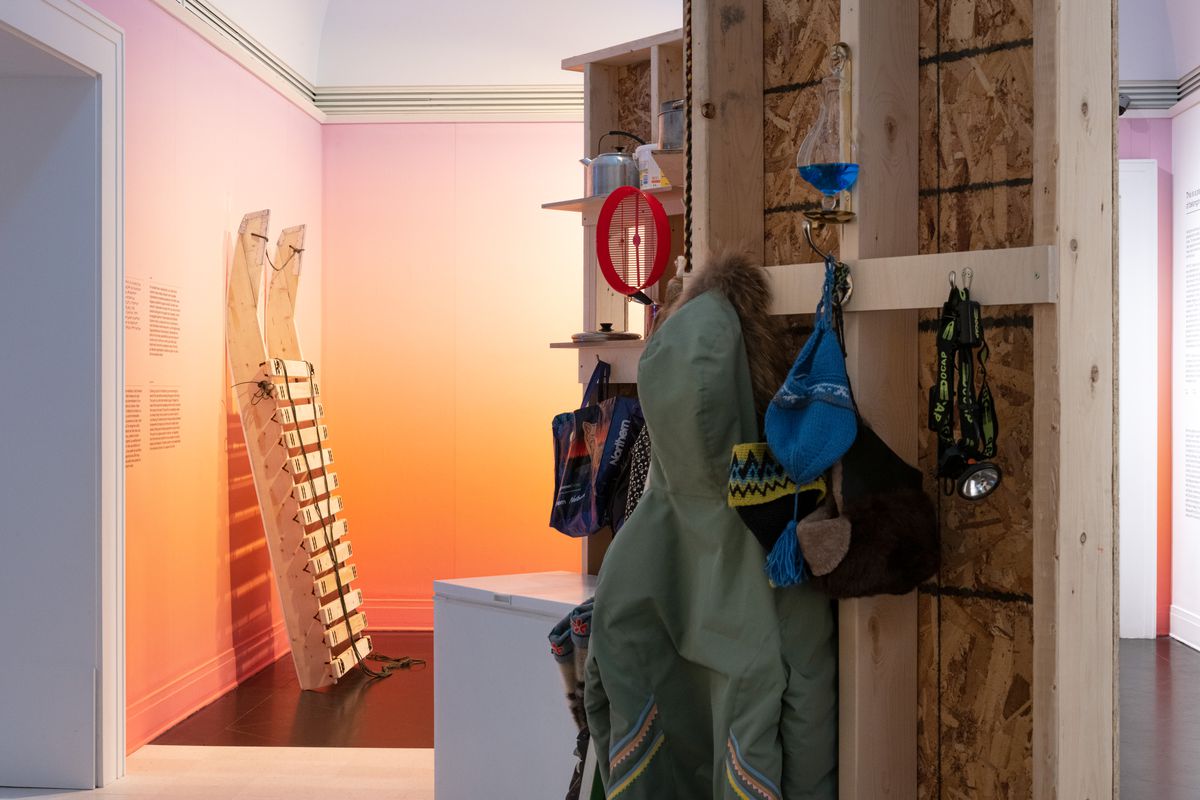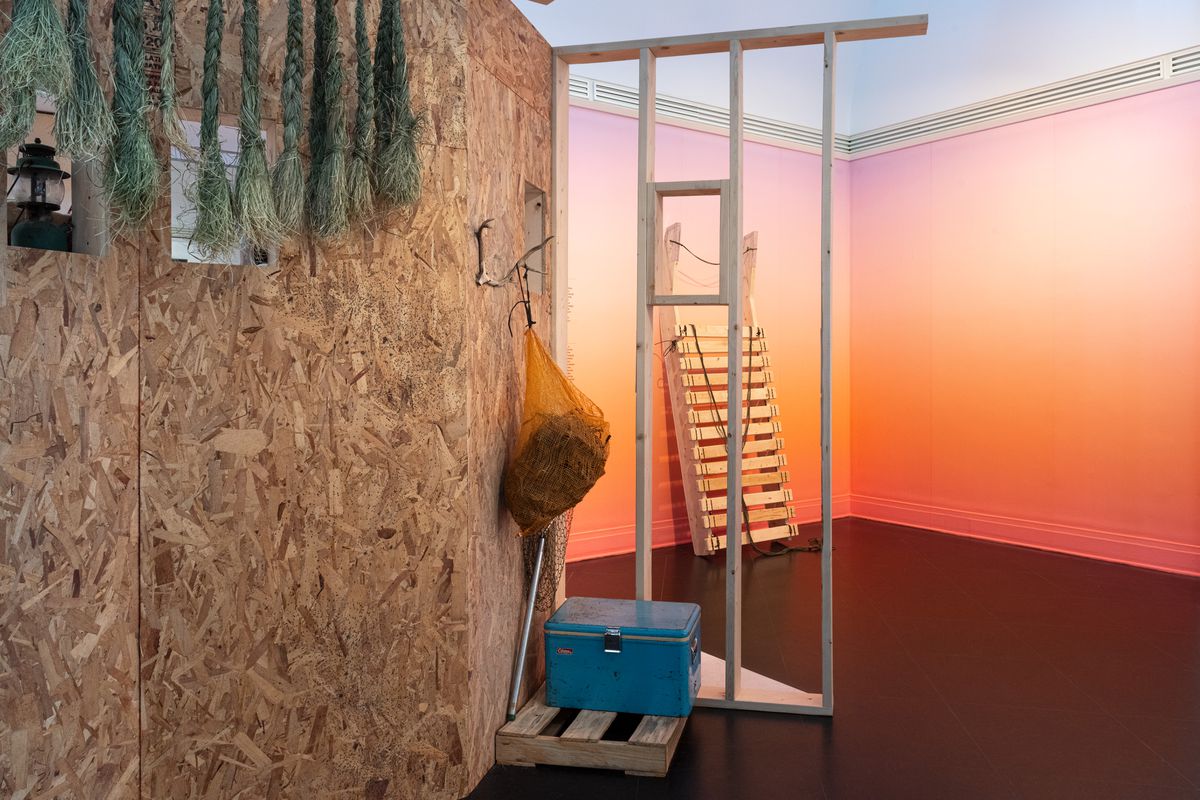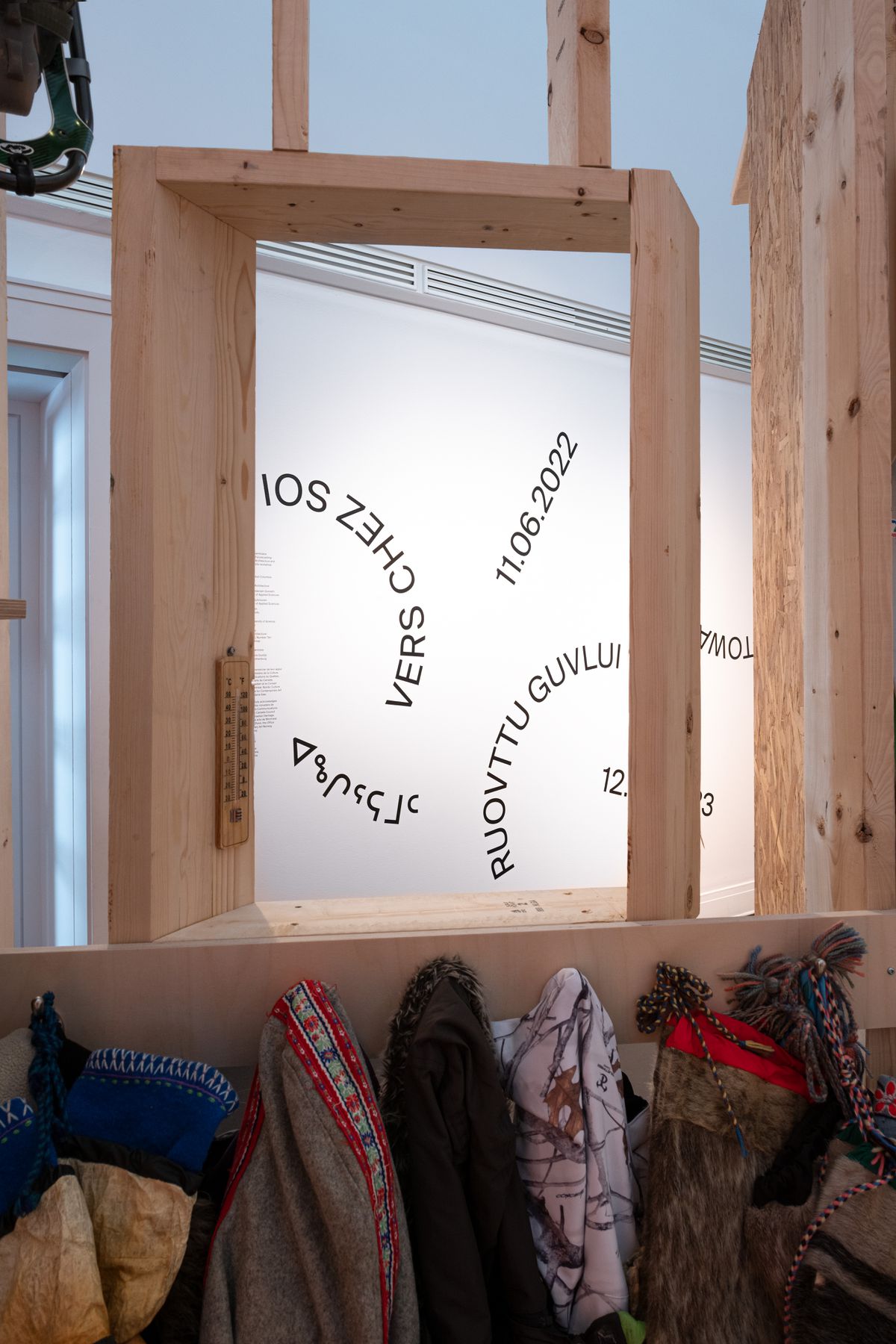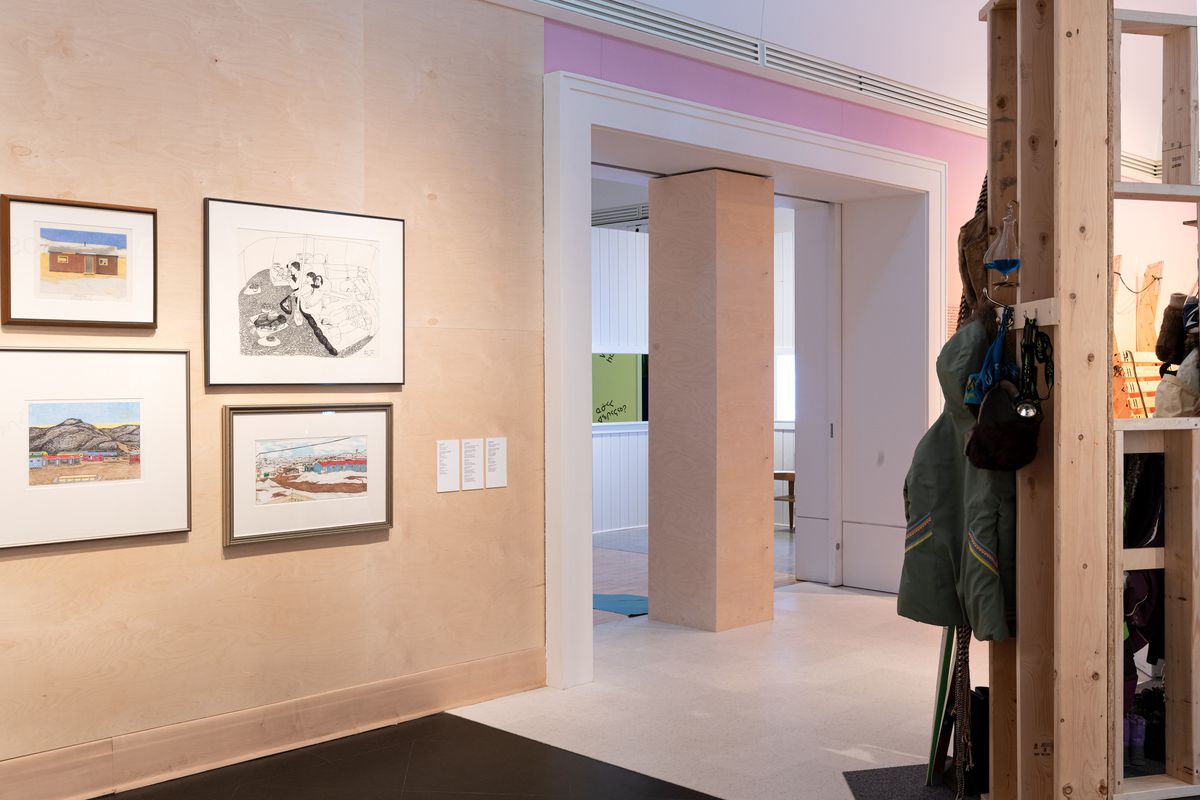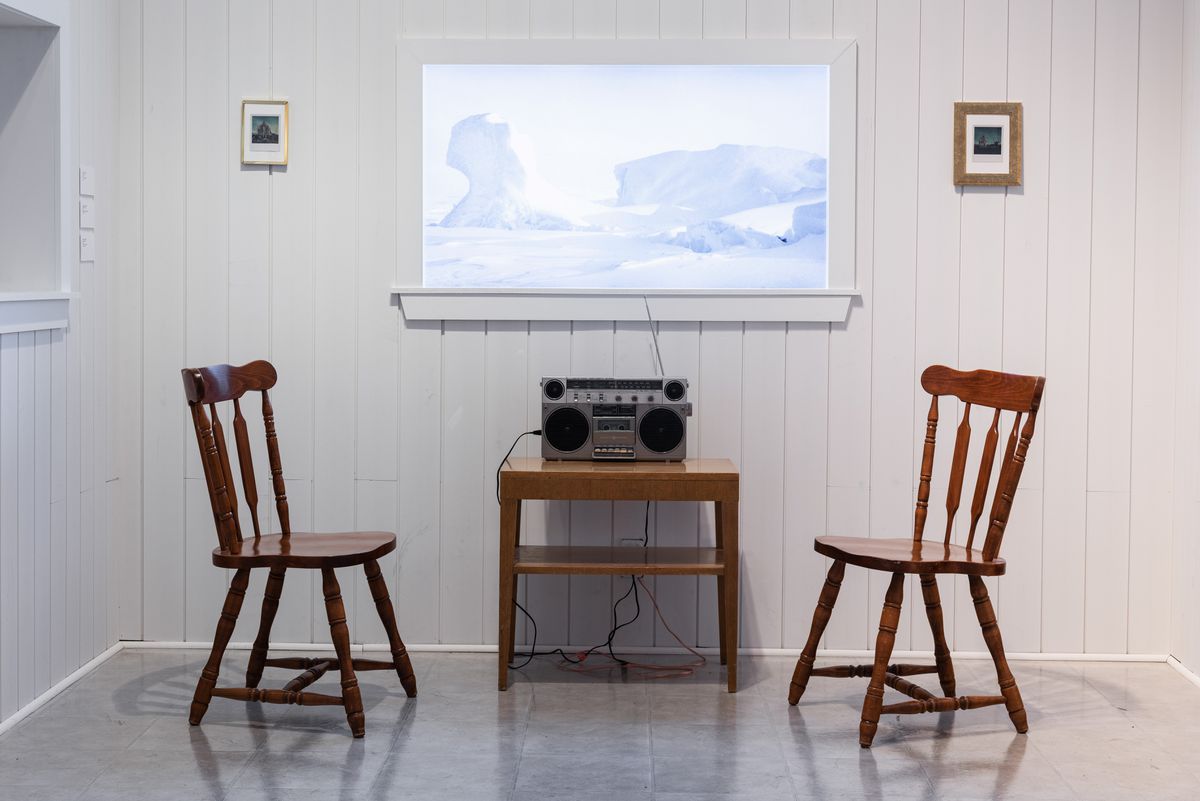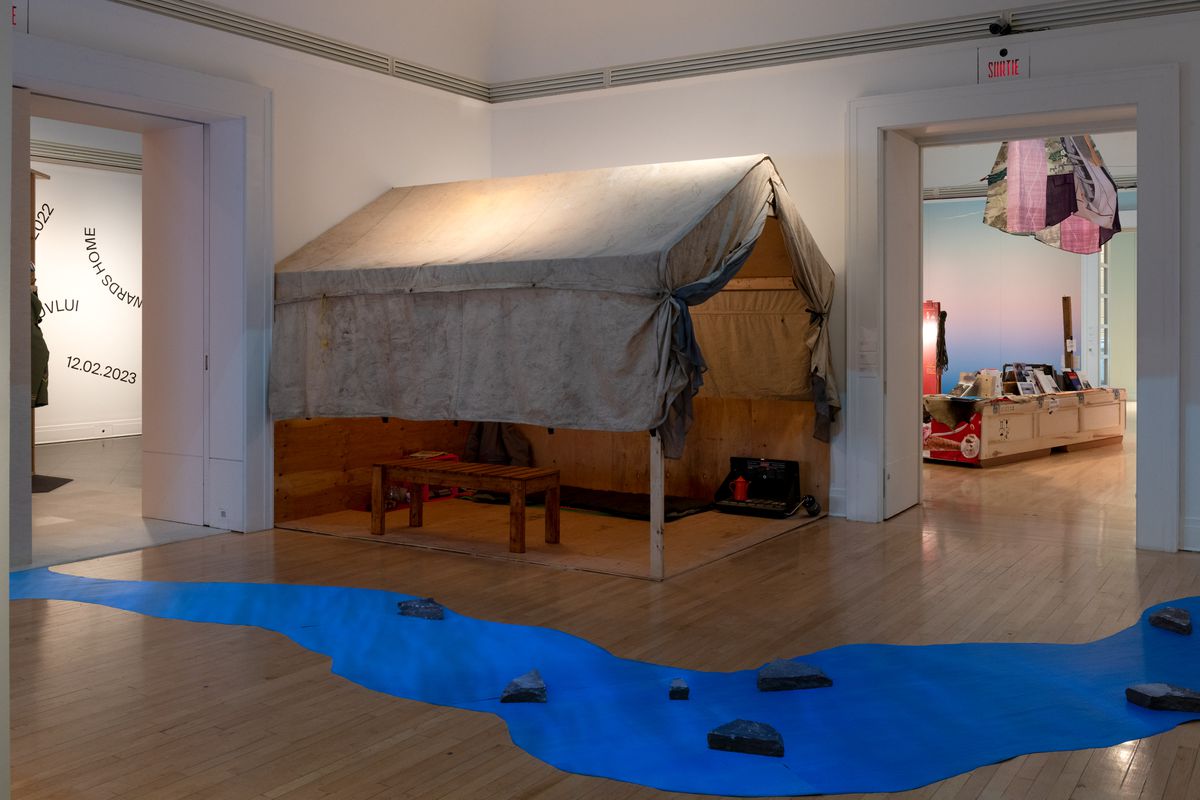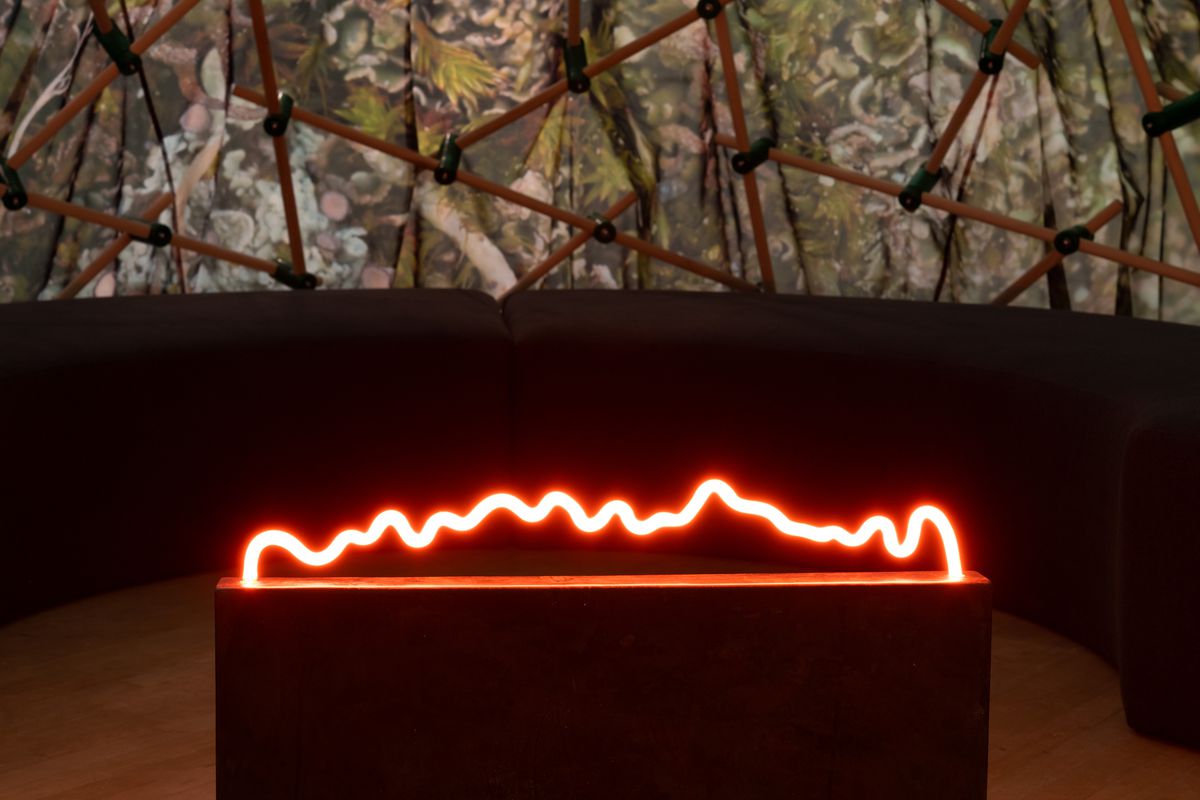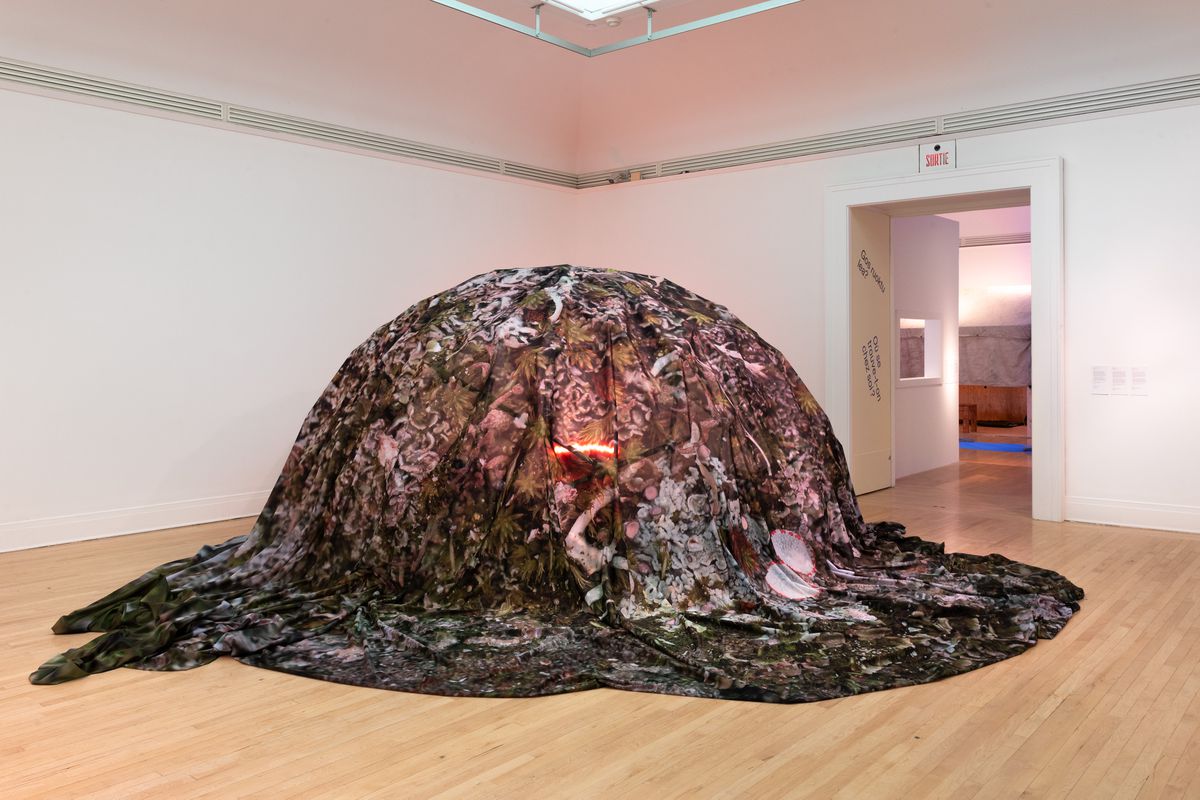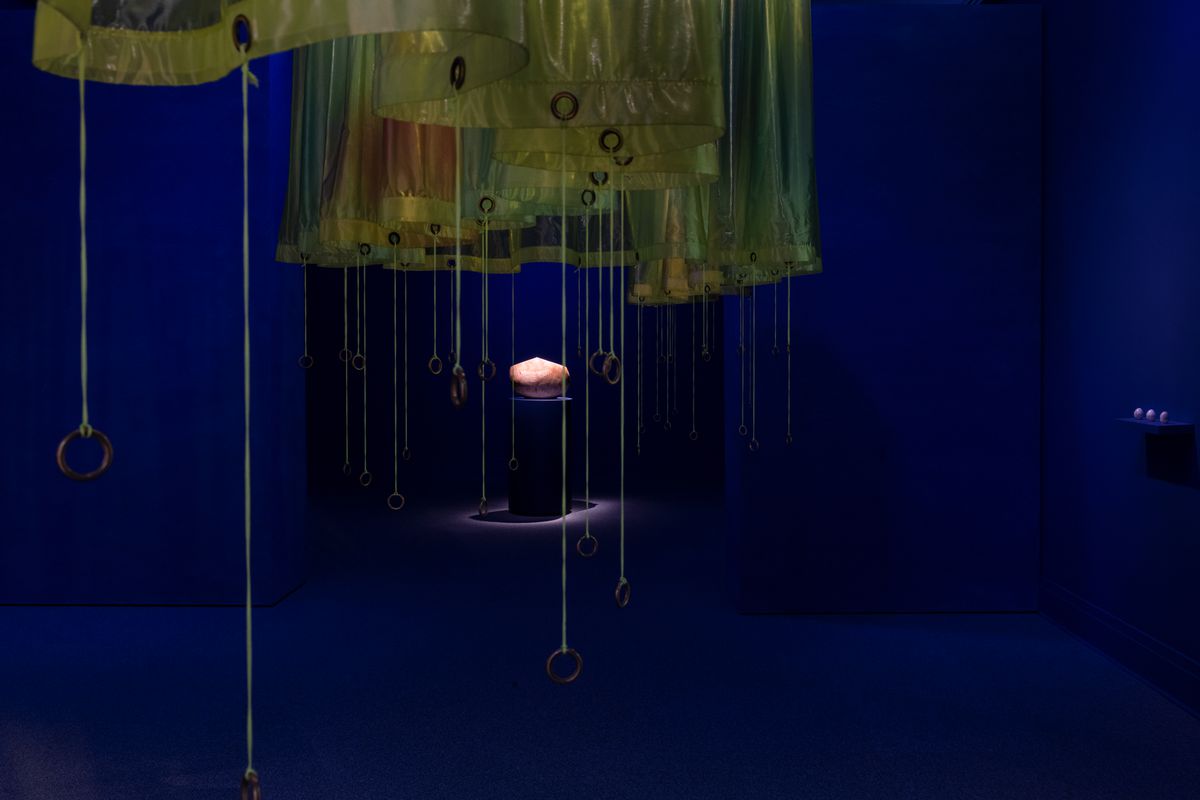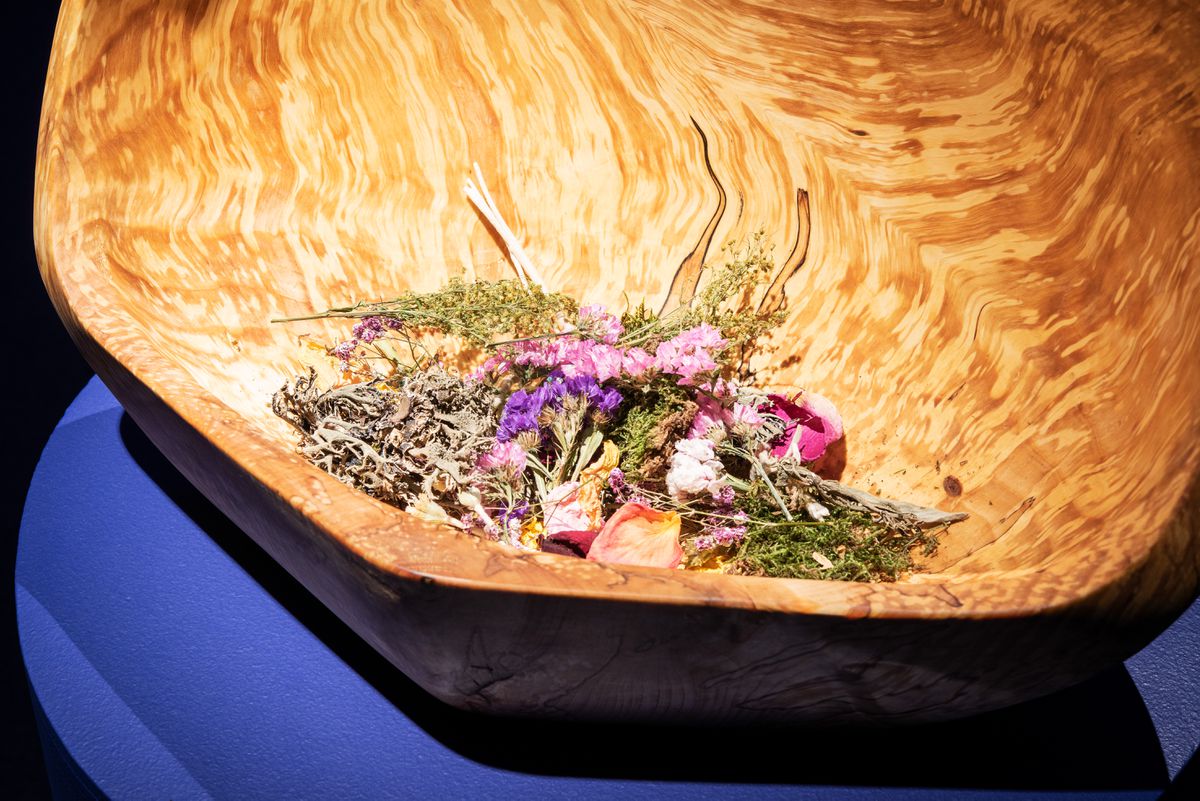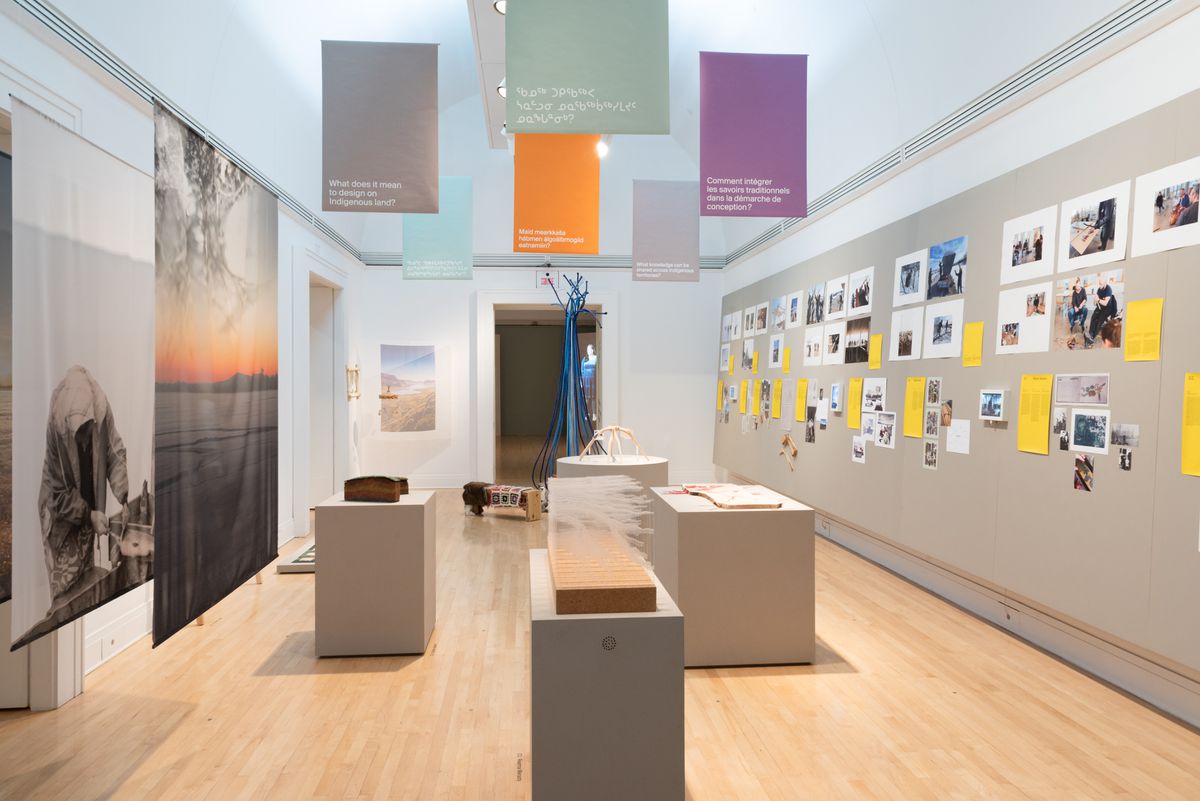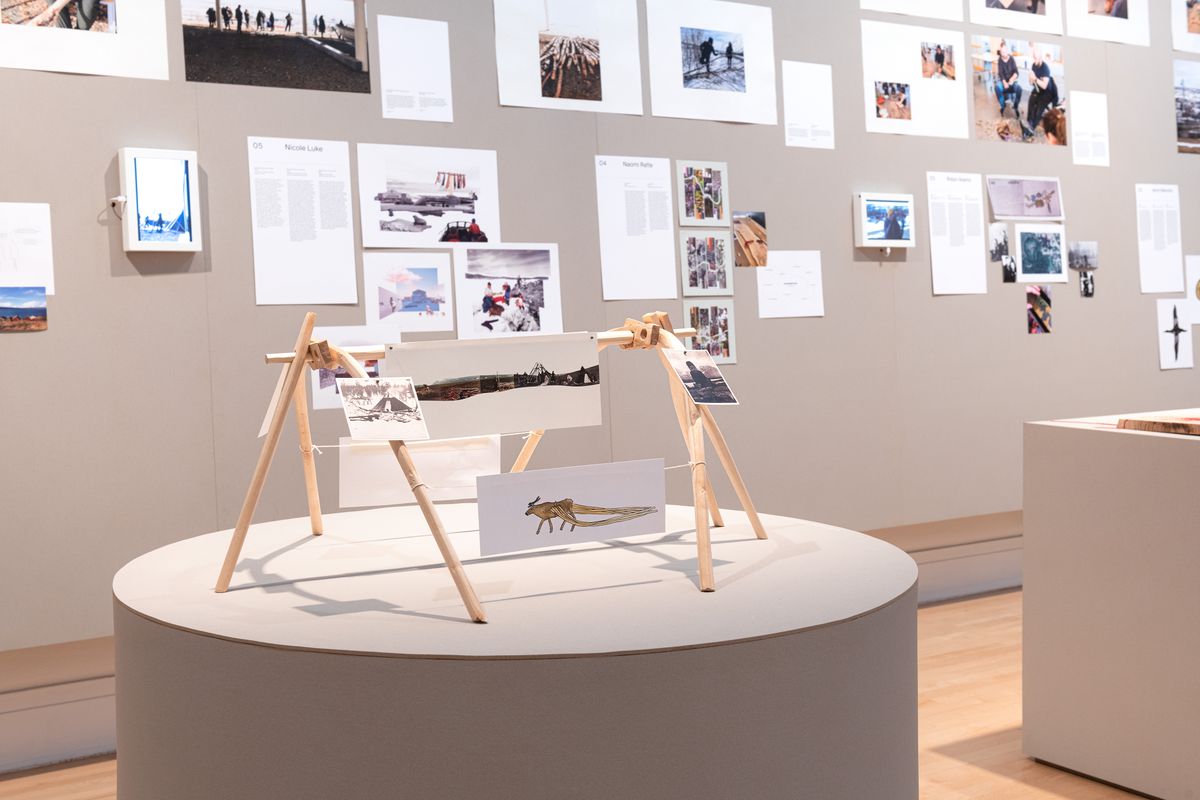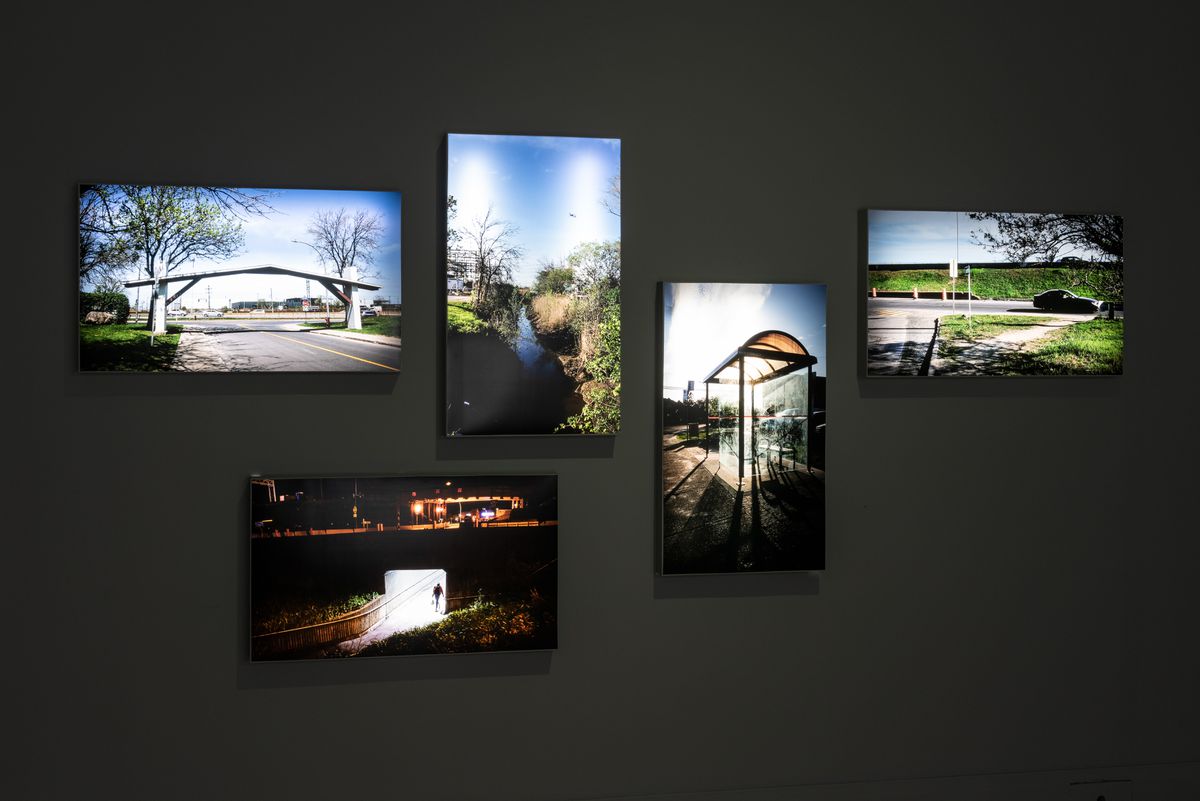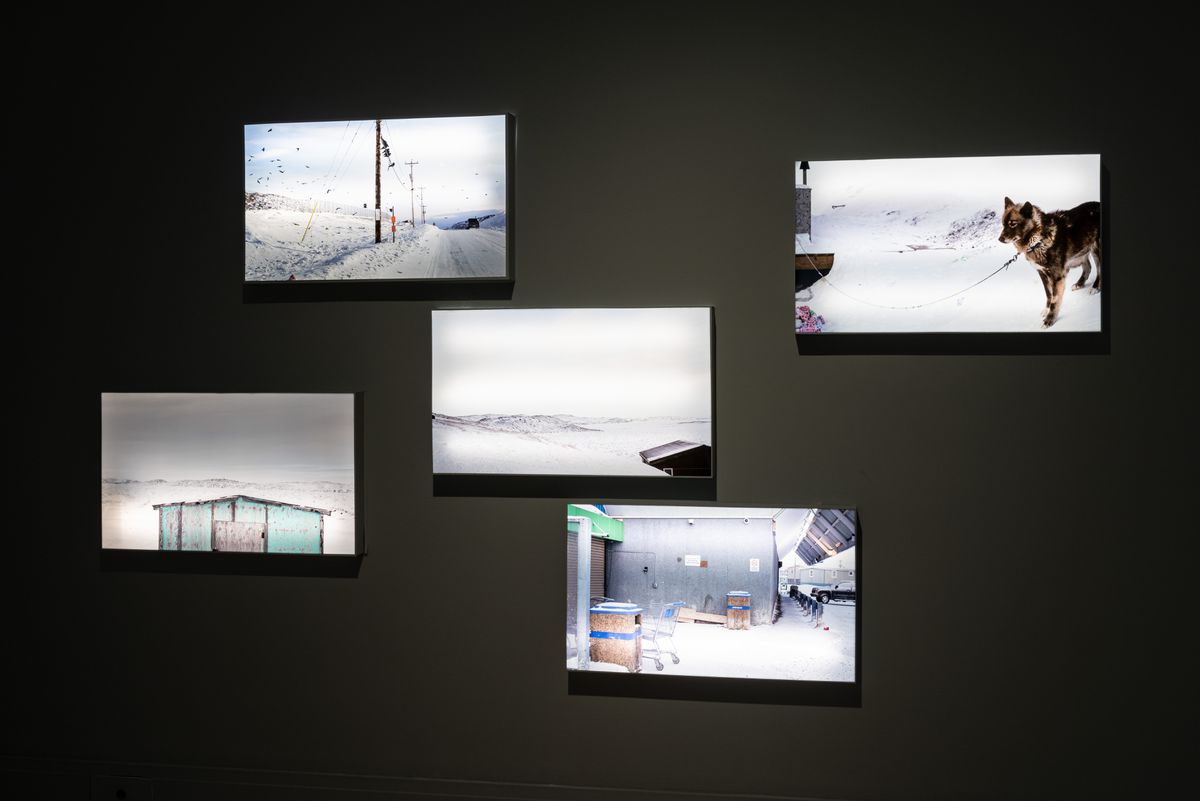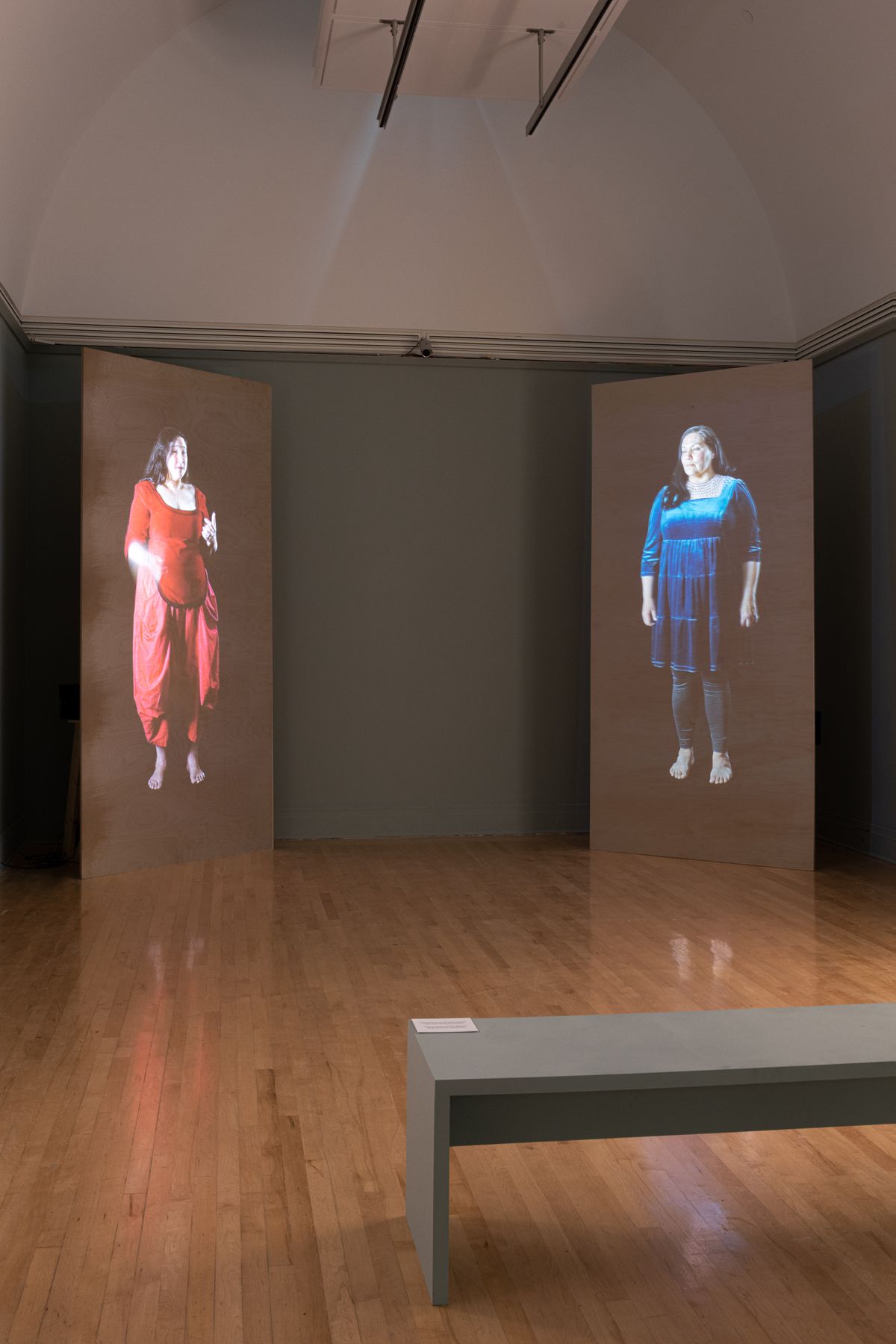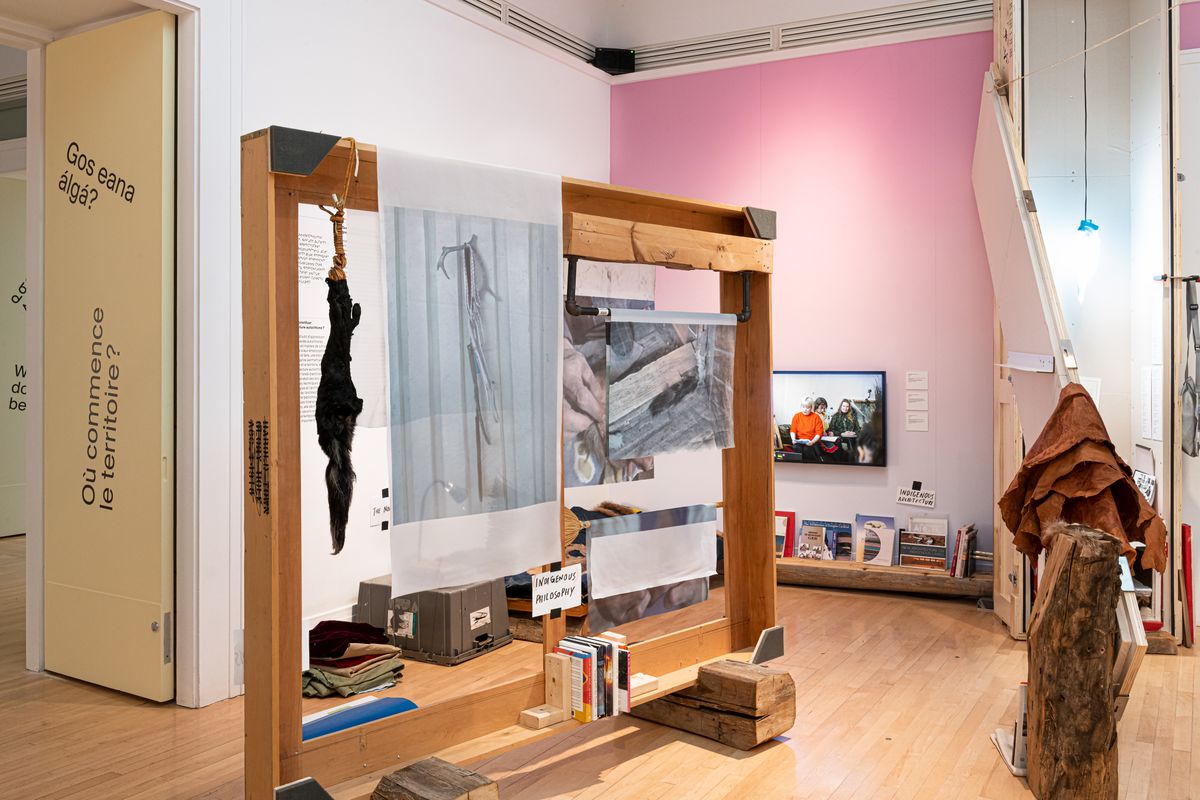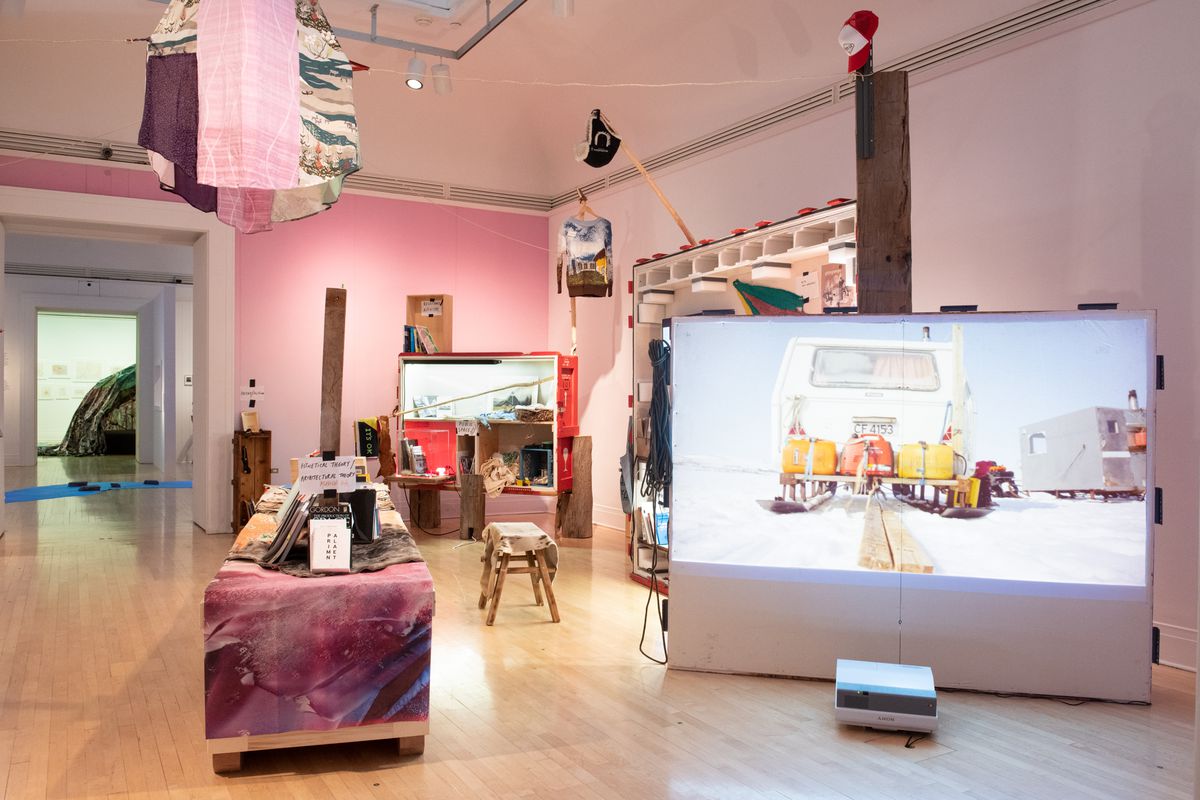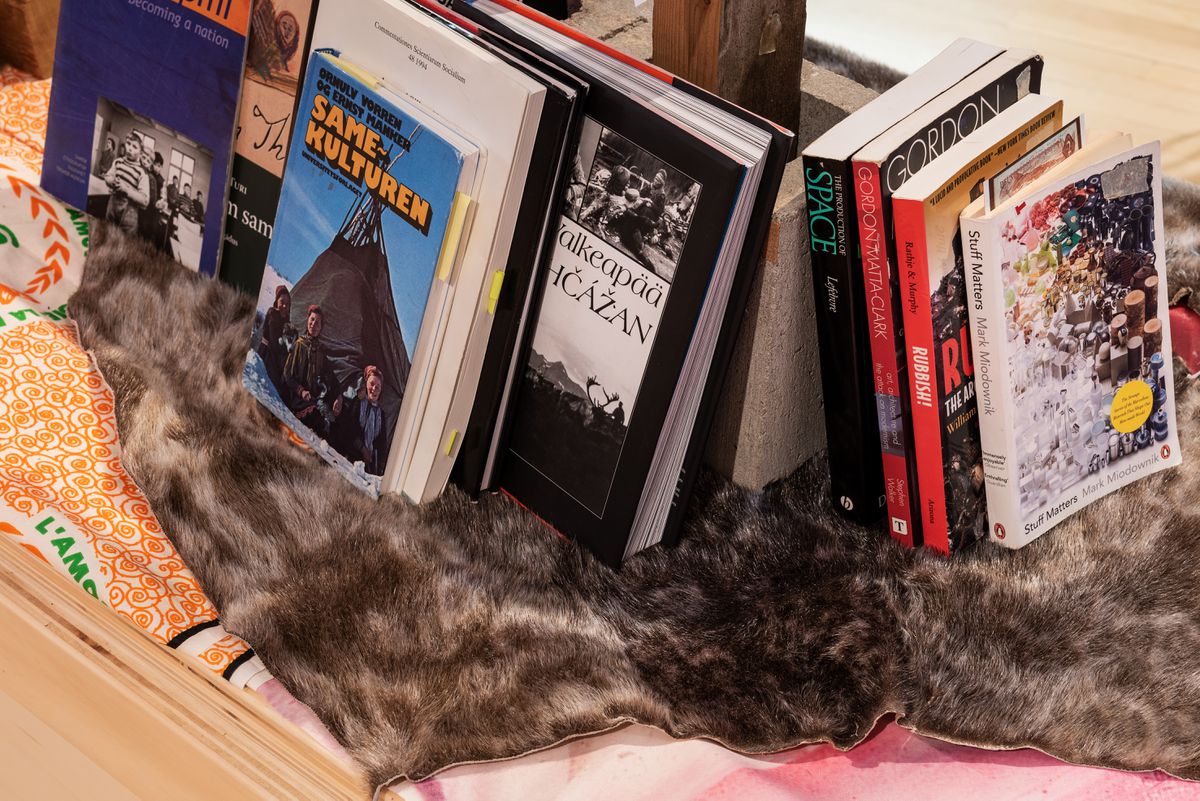A Guide Towards Home
Excerpts of an audioguide by Joar Nango, Taqralik Partridge, Jocelyn Piirainen, Asinnajaq, Carola Grahn, Geronimo Inutiq, Laakkuluk Williamson Bathory, Nicole Luke, and Tiffany Shaw.
ᐊᖏᕐᕋᒧᑦ / Ruovttu Guvlui / Towards Home was co-curated by Joar Nango, Taqralik Partridge, Jocelyn Piirainen, and Rafico Ruiz, with Ella den Elzen as Curatorial Assistant. We have also published talks with Nicole Luke, designer Tiffany Shaw and artists Carola Grahn and Geronimo Inutiq. The exhibition is currently on view in our Main Galleries and runs until 26 March 2023.
- CCA
- Hello, this is an audio companion to the exhibition ᖏᕐᕋᒧᑦ / Ruovttu Guvlui / Towards Home. This is an Indigenous-led project exploring how Inuit, Sámi, and other communities across the Arctic are creating self-determined spaces. It is informed by the perspectives of a group of Inuit, Sámi, and settler co-curators who share the ambition to support Northern Indigenous forms of sovereignty shaped by an understanding of the land as home. The project examines and celebrates practices of designing and building on the land that empower Indigenous communities.
ᖏᕐᕋᒧᑦ/ Ruovttu Guvlui / Towards Home proceeds through a series of future-oriented questions about what it means for Indigenous peoples to design with and be at home on the land: What could home become across Inuit Nunangat (the Inuktitut word for Homeland) and, Sápmi (the Sámi word to describe their land and people) and the North more generally when defined by Indigenous architects and designers? Where do homelands begin?
Porch
- TP
- I work as a curator and artist in Ottawa and my home community is Kuujjuaq, Nunavik. The porch is an important space for homes in the North. There are memories in these spaces: the smell of sealskin, caribou hide, the fuel mix that goes into snowmobiles. I want Inuit or Sámi to recognize and to see themselves in this space, in the things that are here. These are objects that my family, and many other Inuit or Sámi families would have in our porch. If you need to go out for the day to get wood or go out to check the fishing nets or pick berries, a backpack’s always hanging there ready to go. Some of these things are very beautifully made. We wear and keep them with pride but are not delicate about them. They are things for everyday use.
- TS
- As your body progresses through the porch, I wanted to produce an impression of disorientation and discovery. The serrated shape of the porch and the sunrise on the walls are important for that. For a lot of Indigenous people, the position of the sun is an orientation on the land, so with the gradient wall treatment I’m referencing the sunrise as you come in and look to the east. I’m trying to give you an anchor to the beginning of the day—the beginning of the exhibition—by identifying this east direction. Even though there’s this skeleton-like porch structure that’s supposed to carry these objects of home, the sunrise provides some level of comfort, safety, and security. I’m trying to disassemble and assemble how you are as a person in these spaces.
In a similar way, the lighting throughout the exhibition references both the land and the space of the gallery. Changing as you walk through the different rooms; the lighting mimics the favourite seasons that each artist has identified as associated with their work. The porch’s season bridges between spring to early summer, and when you exit through the final gallery, it references the early spring sunset, the twilight. Things at twilight feel a little different and a little bit more magical and special because it’s momentary; the light changes very briefly and then it’s just dark. So, I think that, as you move through each season and space, these feelings will be amplified.
Drawings by Shuvinai Ashoona, Hannah Kigusiuq, Itee Pootoogook, Kananginak Pootoogook, and Padloo Samayualie
- JP
- Many contemporary Inuit artists have been producing drawings of the Northern buildings in their communities. A lot of these pieces relate to family activities within the home. There’s something about the drawings that I find transports you into these spaces. For instance, the information that Shuvinai Ashoona puts into her work is visually fascinating; these are details that are quite important to homes up North. These drawings say this is what qarmaq is. This is what we know as what’s home for us. For urban Inuit, this exhibition holds the memory of these places, the memory of being back home up North. We wanted to have art works presented in mismatched frames to evoke this feeling of being inside somebody’s home. Sometimes the frame itself is not what matters, but that it fits the pieces, the images, that is what is more important.
I’m Calling Home
- GI
- Community broadcasting plays a pivotal role in the North. It’s a means to communicate social realities, cultural survival, and information from world news and politics to daily personal conversations. Broadcasting isn’t just one-way, where an announcer is giving information. People call in to the radio and share stories. I’m Calling Home is the name of a virtual radio program that exists within an Arctic idea of a home.
I’m Calling Home is also a recreation of the community in which this radio show exists. I invited people who might not necessarily be within the field of broadcasting or arts but who represent the variety of the individuals that consist of my community. Community is how we define ourselves.
I re-created the physical context where the radio exists in the Arctic, extending the house outwards to include the environment and the land. That’s where Inuit truly live; for many of us, that’s where our sense of home is. In the summer, with my family, we would live out in a tent by the water and fish. I am trying to communicate a memoryscape of different environments and different times to southern visitors in the exhibition.
Nuna
- A
- I am urban Inuk who grew up in the suburbs of Montreal. When it’s beautiful outside, I want to be outside. But it’s hard to use my digital screens in the glare of the sun; it’s hard to read my books with my eyes open just enough to see. I want my home to have fewer walls separating me from outside, but I still want a roof to shield my eyes from the sunshine. I love homes that have kitchens outside, garages that are half inside, half outside. I want to make a space with both the safety and security of walls and the brush of the wind on your cheeks.
To create a space that makes for the safety of an enclosed home and acknowledges the beauty of our outside home, I proposed making the sky the ceiling of my tent, bringing a stream inside as a tap. Bringing the moss inside as the bed, and rock inside as the countertop. I proposed to bring in a stone qulliq with a neon light as a flame for the hearth of the home space. This space is a reminder that the universe is your home; that the earth is your home.
Offernat (Votive Night)
- CG
- I am an artist from Jåhkåmåhkke (Jokkmokk), Sweden, currently living in Malmö. Nowadays, I feel the future seems unclear and sometimes scary. What can we even say about the future sovereignty of any group of people when so many things are not right—when nature is changing, when people are subject to poverty, hunger, war, and extreme weather. We should start thinking about the question “Where do we go from here?” within the context of global migration. Solidarity must be part of our answer. Offernat (Votive Night) is a sort of altar. By adding flowers or leaves regularly, as an offering, the altar comes alive through ritual. In replacing the flowers in the gallery everyday, hopefully the CCA staff will consciously reflect on life, relations, and gratitude while performing this ritual.
In this piece I have collaborated with duojár Ingmar Israelsson. He has crafted this sculpture, the altar. Almost forty years ago, Ingemar found this burl on a birch that was at least a hundred years old near his home in Vallenas. Naturally, this piece of birch became the centrepiece of this installation. In 1700s in Scandinavia, Sámi drums were burned as part of the Christianization of the Sámi people. I come back to this fact while thinking about where we search for guidance in times of crises. I sometimes wonder how it would be to be able to ask the nåitien (the Sámi shaman) for guidance. How about looking for answers in the burning skies, the stars, or the trees?
Futurecasting
- NL
- I am an urban Inuk living in Manitoba, homeland of the Métis Nation and Treaty One Territory. As an Inuit Futures Ilinniaqtuit, and in conversation with Ella den Elzen, I developed a series of workshops and seminars entitled Futurecasting. We gathered nine emerging Indigenous designers to reflect on and to shape the futures of Indigenous-led architecture and design. The workshop started with no precise idea of a result and left space for the participants’ individual experience and process to shape the outcome. Through all the seminars we tried to prioritize conversation and collectivity. It’s important for the future of architecture in the North to be driven by compassion and a deep understanding of the community through the design. These types of conversations should be part of the design process. Architects should be assisted by community and spend time in the communities to understand what benefits them.
- TS
- Using a pinup board material in the Futurecasting workshop gallery, where the results of the explorations are displayed, lets people understand that this is a space for creation, a space for ideas. Reaffirming that idea, banners hang from the ceiling with questions printed in different languages. It centres this large gallery space around questions; it highlights a deep process that a lot of Indigenous designers have within themselves coming together in this one space. Nicole Luke was specific in her request for indirect lighting to fill a space, so the season in the space references the studio feeling during the daylight of wintertime.
akunniq
- TP
- Sometimes human attitude towards land is that it’s disposable. It is there for consumption, and that is its only use. It’s a consumptive view, to see places this way instead of recognizing that land is precious. Throwaway spaces, in this worldview, are spaces that are not important enough to be maintained to some level of intended beauty. Their only function is to connect more important spaces; otherwise, they’re forgotten about. My contention is that Inuit move through and inhabit these landscapes with the same awareness of our connection to land as we do in so-called pristine landscapes.
My photography series entitled akunniq started with Dorval Circle, a highway interchange located near the airport in Montreal, because I was interested in the space between places more than where people are going at the end. This series also looks at these throwaway spaces in the North, in Iqaluit, and puts them in relation with the photographs I took in Dorval as a way of understanding these places that Inuit move through with this awareness I was talking about. With photography, I like to reveal what is beautiful in those, so called, ugly throwaway spaces.
Inissaliortut: Making room
- LWB
- I am an artist based in Iqaluit, Nunavut. Taqralik and I were introduced long before we were born, when our fathers first met as teenagers. Our friendship is expansive, constantly growing through our common loves of poetry, Inuit history, beads, stitches, animals, and family. In this installation, we celebrate how our friendship bolsters us personally and how it helps create understanding and art in our community. We created a video projection of each of us talking to one another and simultaneously watching each other.
Taqralik and I are exploring how Inuit make use of urban spaces in ways that are not expected by Qallunaat or non-Inuit urban planners. Whereas Qallunaat infrastructure creates grids and patterns of movement based on private ownership and ninety-degree angles, Inuit see the land as a basis for activity. If there is a possibility of making use of space and there are no other options, Inuit will often make use of it.
Sámi Architectural Library
- JN
- I am a Sámi architect living and working in Norway. Being a Sámi, you are always confronted by power structures and hierarchies; you see so much injustice being done to Indigenous people, so you start being critical towards those systems. In this context, there’s an obvious need to create a Sámi platform for discussion. That’s what I am trying to create with Girjegumpi / the Sámi Architectural Library.
I think of the Sámi Architectural Library as place-making. These are places where we remove ourselves from the strangling, defining, and controlling types of power structures that nation-states intuitively create when they work within institutional formats.
We have a necessity to promote Sámi perspectives because that’s where we find land-based knowledge systems. They are disappearing and as we engineer our landscapes, we eat up the land and space that we need for our culture and land-based technologies to exist. The connection between home and land is something for me as a Sámi that’s very present. It’s a guideline, it forces you to respect a certain way of thinking and relating. - TP
- I think this exhibition is really about Inuit-led spaces, Sámi led spaces, Northern Indigenous led spaces, and I think that it’s so important for us to have self-determination in all its ways, not just in the political sense, but in everyday life. It’s about places where Inuit are the ones to determine what is authentically Inuk.
